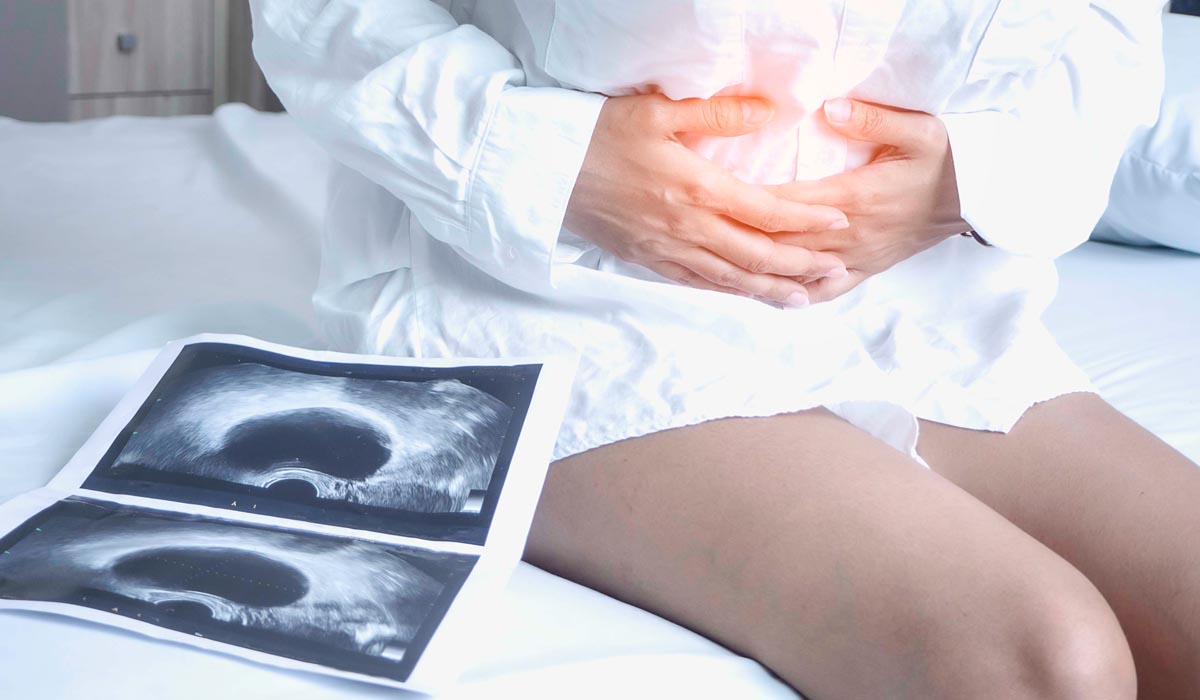✨Book online and enjoy a 5% discount on your first consultation
Home » Gynecology Services » Ovarian cysts

Medical Service Name – Ovarian cysts
The ovaries are an important element of a woman’s reproductive system. They’re found on both sides of the uterus in the lower abdomen. The hormones estrogen and progesterone are produced by them.
Cysts in or on the ovary are solid or fluid-filled pockets. Most women develop at least one cyst during their lives. Cysts are usually painless and have no symptoms.
Possible Causes
Dermoid cysts and endometrioma cysts are two kinds of ovarian cysts. The most prevalent form, however, are functional cysts. Follicle and corpus luteum cysts are two kinds of functional cysts.
An egg develops in a follicle during a woman’s menstrual cycle. This sac can be seen within the ovaries. This follicle or sac usually bursts open and releases an egg. The fluid inside the follicle might develop a cyst on the ovary if the follicle does not burst open.
Follicle sacs usually disintegrate once an egg is released. However, if the sac does not dissolve and the follicle’s entrance closes, more fluid can accumulate inside the sac, resulting in a corpus luteum cyst.
Ovarian Cysts Can Also Be Classified As:
Polycystic ovarian syndrome is a disease that affects certain women. This disease is defined by a significant number of tiny cysts in the ovaries. It has the potential to expand the ovaries. Polycystic ovaries can lead to infertility if left untreated.
Risk Factor
Sign & Symptoms
Ovarian cysts often go unnoticed. As the cyst develops, though, symptoms may arise. Signs may include:
The following are severe ovarian cyst symptoms that require emergency medical attention:
A burst cyst or an ovarian torsion might cause these symptoms. If not addressed promptly, these problems might have significant implications.
Diagnosis
During a pelvic check, our specialists can identify cysts. Our physicians may prescribe one or more of the following tests to determine which kind of cyst you have:
Treatment Options at 7DMC
Our team of specialists may advise you to use birth control tablets. The hormones in the tablets will not cure the cysts, but they will help prevent new ones from forming.
Surgery may be required for some ovarian cysts. This includes those that are big, do not go away, or develop symptoms. If you’re approaching menopause, surgery may be required since cysts are more likely to be malignant.
Smaller cysts are treated by laparoscopy. Laparotomy is used to remove cysts that are potentially malignant.
Hormonal imbalance, pregnancy, endometriosis, and pelvic infections are the most common causes of ovarian cysts. Ovarian cysts are fluid-filled sacs that develop on the ovary or its surface.
Cysts and tumors of the ovary can arise at any age, although they are most frequent between puberty and menopause. During a girl’s natural menstruation, cysts (fluid-filled sacs) can form. Often, they go unnoticed or disappear on their own. Ovarian cysts are usually small, although they can get more prominent in certain conditions.
It is usual for a woman to have at least one burst cyst every month because the ovaries develop a cyst that purposely ruptures to release an egg, allowing the woman to become pregnant during a regular menstrual cycle.
Near Dubai Miracle Garden,
Diamond Business centre A,
1st Floor,
Arjan, AI Barsha,
Dubai.
WhatsApp us